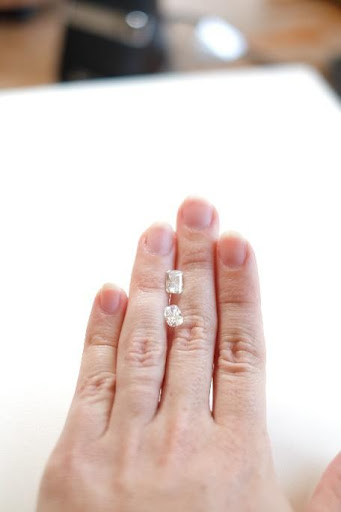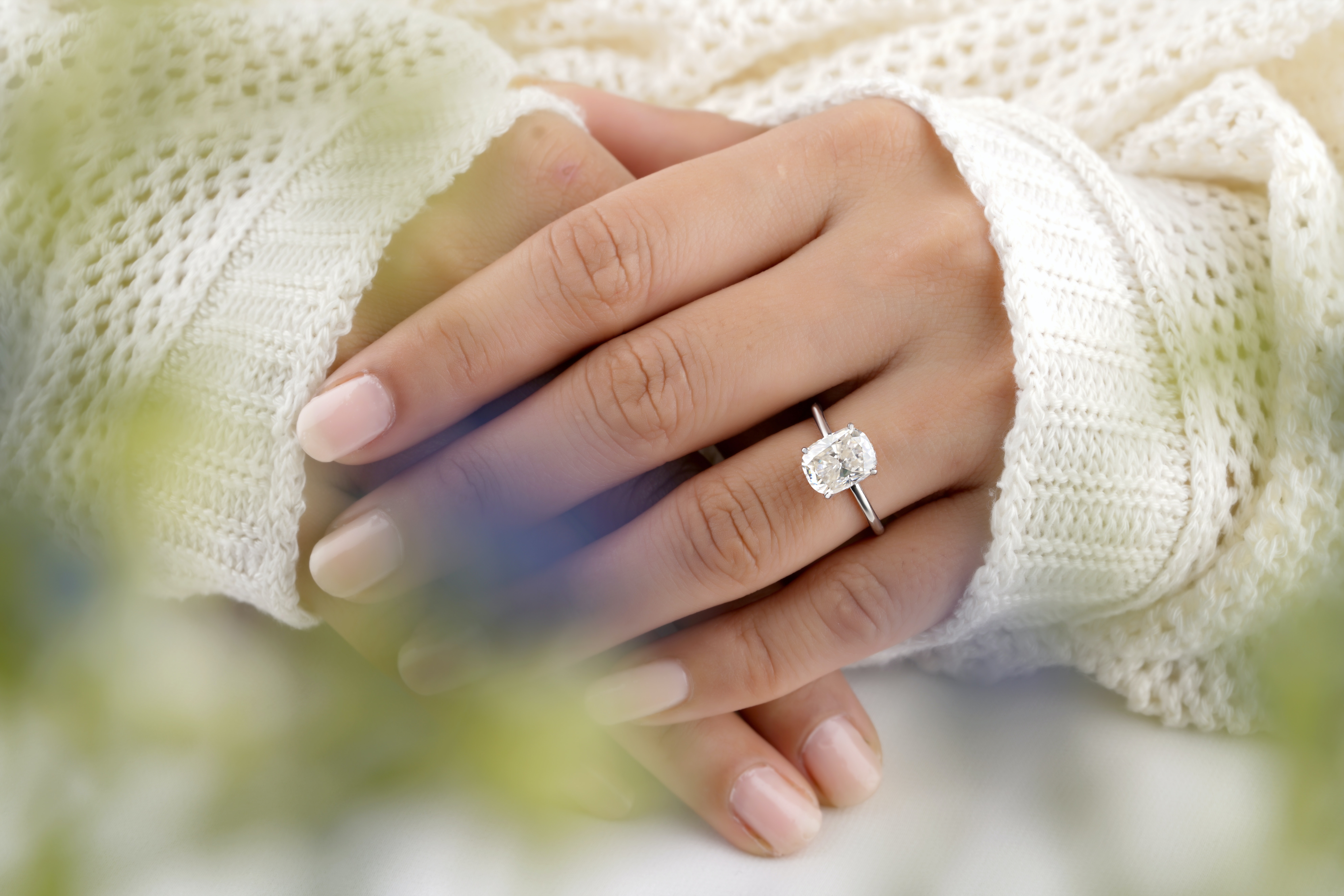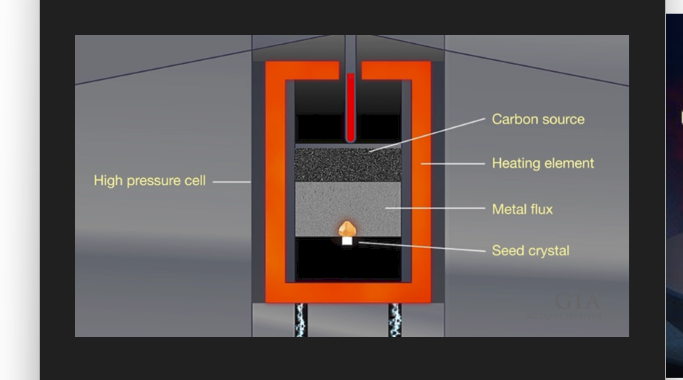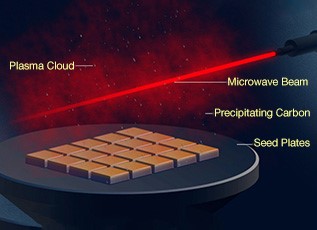Lately demand for lab grown diamonds has gotten hot, hot, hot – so we’re taking a minute to cover common questions and share some important insights that aren’t always easy to distill from a Google search.
But, seriously, are they real?
Okay, first off, yes! Lab diamonds totally are real diamonds in every scientific sense of the word. They are optically, chemically, and structurally the exact same as diamonds mined from the earth. And to that end, they sparkle (refract light) and shine the same way, and are as hard as, their earth-mined sisters.

So, wait, how’s lab grown diamond different than moissanite?
Moissanite is a diamond imitation – it’s usually a synthetic gemstone (also grown in a manufacturing setting using high heat and pressure). Natural moissanite does exist, but is very rare and has only been found in small amounts in several places, including Arizona and Israel. Optically, moissanite looks enough like a diamond that it’s become somewhat popular as an alternative especially in the last ten years or so, but it does refract light differently than a diamond. Most notably, when you look at a sparkly moissanite you see a lot more colors shining back at you than if you were looking at a diamond.
Right, okay.. back to diamonds! So, how exactly do they make lab diamonds?
So far, there are two main processes being used: High Temperature High Pressure (HPHT) and Chemical Vapor Disposition (CVD). HPHT is meant to recreate the way diamonds form in the earth’s mantle, while CVD recreates diamond creation in interstellar clouds (both pretty cool!).
For the HPHT process, a tiny diamond seed is placed in a small chamber that can produce intense heat and pressure, mimicking the conditions deep within the earth that form natural diamond. A molten metal soup in the chamber dissolves a carbon material, which then crystalizes on the seed and grows a diamond. The process takes several days to weeks, with a one carat diamond taking about two weeks.
For the CVD process, diamond seed plates are placed in a vacuum chamber filled with carbon-containing gas and heated to a high temperature. A microwave beam is used to break down gas molecules so that carbon atoms crystalize on the seed plates. The diamonds are taken out every few days as they grow to remove any non-diamond carbon, and the whole process also takes several weeks, with a one carat diamond taking about a month or so to grow. CVD crystals usually display a brown coloring that is then fixed by heat treatment prior to faceting.
HPHT has been around since the 1950s, but the technology has really only improved enough to make diamonds worthy of engagement rings in the last three years or so (writing as of January 2023). CVD technology was invented in the 1980s but has also made rapid advances in the last 3-5 years. The combination of these advances has led to the current lab grown diamond jewelry boom. Currently, manufacturers in India are the leading producers of the higher quality and size lab diamonds suitable for engagement ring center stones.
I like that lab diamonds seem ethical and environmentally friendly!
Okay, we are mostly onboard with that, but let’s caveat it by saying that it really does take a lot of energy and resources to make these diamonds (possibly so much that it puts the energy consumption on par with mining natural diamonds).
I get that lab diamonds are real diamonds now.. so why are they so much cheaper than natural diamonds?
Diamonds get their price tag based on two factors: beauty and rarity. Natural diamonds get rarer each day (with some caveats) while lab grown diamonds are growing in supply each day as more and more companies enter the lab grown diamond market. In fact, the supply has grown so much over the last couple of years that lab diamond prices can be more than 50% less than comparable natural diamonds.
As the technology to grow diamonds continues to improve and more suppliers come online, prices may continue to come down in comparison to natural diamonds, which might have future implications for resale value or jewelry insurance.
Also, lab grown diamond prices can vary widely. Some of that is based on their beauty (so beware: if a diamond price seems too good to be true, it probably is), but it is also based on the availability and popularity of the cut as well as how much the company selling bought it for (and when). So basically, you should shop around before you buy!
So you mentioned beauty. Are lab grown diamonds as pretty as natural diamonds?
Definitely! Lab grown diamonds are graded the same as their natural counterparts and “the 4 Cs” apply the same way. They are also certified by well-known labs like IGI and GIA, and you should always ask to see their report.
There are some things to keep in mind, however. We don’t ever recommend ordering a diamond off the internet without seeing it for yourself first (or having a trusted expert pick it out with you).
Because lab diamonds cost so much less, sometimes the diamond cutters don’t take the same care cutting lab grown diamonds that they would with their natural counterparts. Since the cut of a diamond can have a huge impact on it’s overall beauty and appeal, it’s really important to make sure you have a well-cut diamond, be it natural or lab grown.
Lab diamonds also tend to be cut to “ideal” shapes based on what the appeals to an average consumer. If you are looking for a really unique stone – such as something vintage-y or special, you may have to work with a special supplier (like us!) who is able to locate specially cut lab diamonds or even have them cut especially for you (yes, we can do that!).
So let’s recap – Key Takeaways
⟡ Lab grown diamonds are real diamonds.
⟡ Just like their natural diamond counterparts, lab grown diamonds vary in beauty and price.
⟡ Don’t buy a lab grown (or any!) diamond or diamond ring without either seeing it in person or having a trusted expert select it with you.
⟡ Make sure to price shop lab grown diamonds, but be wary of deals that seem too good to be true.



Comments +